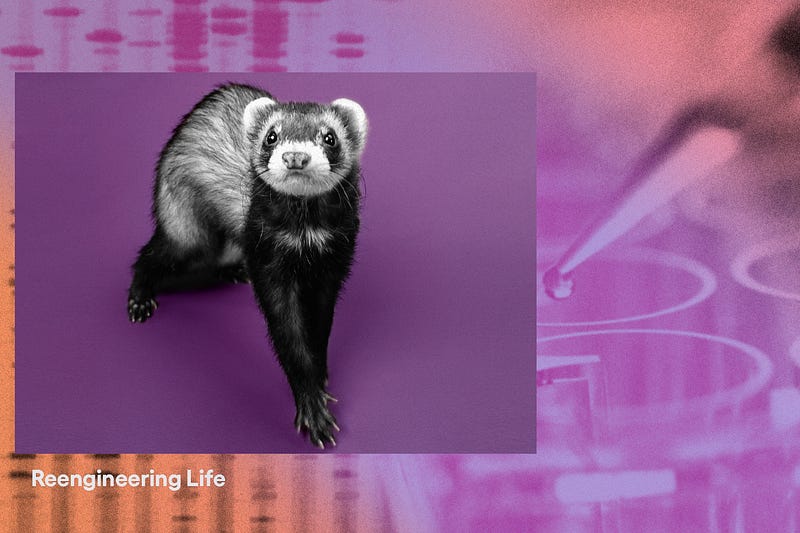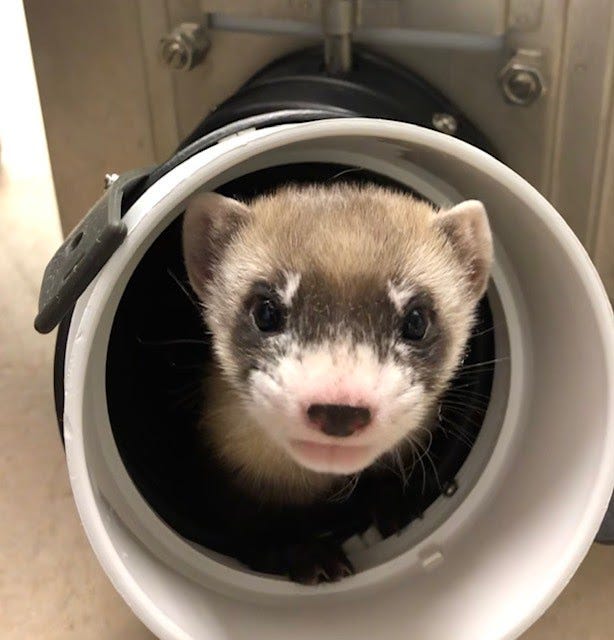Revolutionizing Conservation: The Cloning of Elizabeth Ann
Written on
Chapter 1: A New Era in Conservation
In the realm of wildlife conservation, a significant advancement has emerged with the cloning of a black-footed ferret named Elizabeth Ann. This remarkable event marks the first successful cloning of an endangered North American species, providing a beacon of hope for her struggling population.

Elizabeth Ann is a clone of Willa, a black-footed ferret that passed away over three decades ago. This pioneering effort, announced by the U.S. Fish and Wildlife Service on February 18, 2021, is critical for the survival of a species that has dwindled to approximately 350 individuals across regions like Wyoming, South Dakota, Montana, and Arizona.
Section 1.1: Historical Context
Once prevalent across the Great Plains, black-footed ferrets faced near extinction by 1981, primarily due to the decline of prairie dogs, their primary food source. The dramatic reduction in prairie dog populations has been attributed to various factors, including habitat destruction and disease.
Subsection 1.1.1: The Cloning Breakthrough
With the potential to introduce genetic diversity, cloning could be a game changer for black-footed ferrets. Elizabeth Ann’s genetic material was derived from Willa’s frozen cells, thus reviving genetic lines that had vanished from the current population.
"There will be additional clones of Willa," stated Bridget Baumgartner, a program manager at Revive & Restore. This organization is committed to utilizing biotechnology in efforts to recover endangered species.
Section 1.2: Cloning for Conservation
Elizabeth Ann and future clones will not be integrated into the wild population immediately. Instead, they will reside at the U.S. Fish & Wildlife Service’s National Black-Footed Ferret Conservation Center in Colorado for research purposes. If they are found to be healthy, future offspring could be bred and potentially reintroduced into the wild.
Chapter 2: The Genetic Legacy
The first video, "The precious genes of the world's first cloned ferret could save her species," provides insight into how Elizabeth Ann could play a vital role in the conservation of her species.
The second video, "Elizabeth Ann, the first cloned black-footed ferret," explores the implications of cloning endangered species and the scientific endeavors behind this groundbreaking project.

The cloning of Elizabeth Ann was made possible thanks to the foresight of the Wyoming Game and Fish Department, which preserved Willa’s cells in 1988. This foresight has opened doors for future conservation efforts.
Despite the promise of cloning, challenges remain. Critics have raised concerns about the genetic uniformity that may arise from cloning, emphasizing the need for genetic diversity within populations.
As the scientific community continues to navigate the complexities of cloning and conservation, traditional methods will remain essential. Relocating prairie dogs and mitigating diseases like sylvatic plague are critical to ensuring the survival of black-footed ferrets and their habitat.
In summary, while cloning may not be the definitive solution for every endangered species, it holds significant potential for bolstering genetic diversity and aiding in conservation efforts.